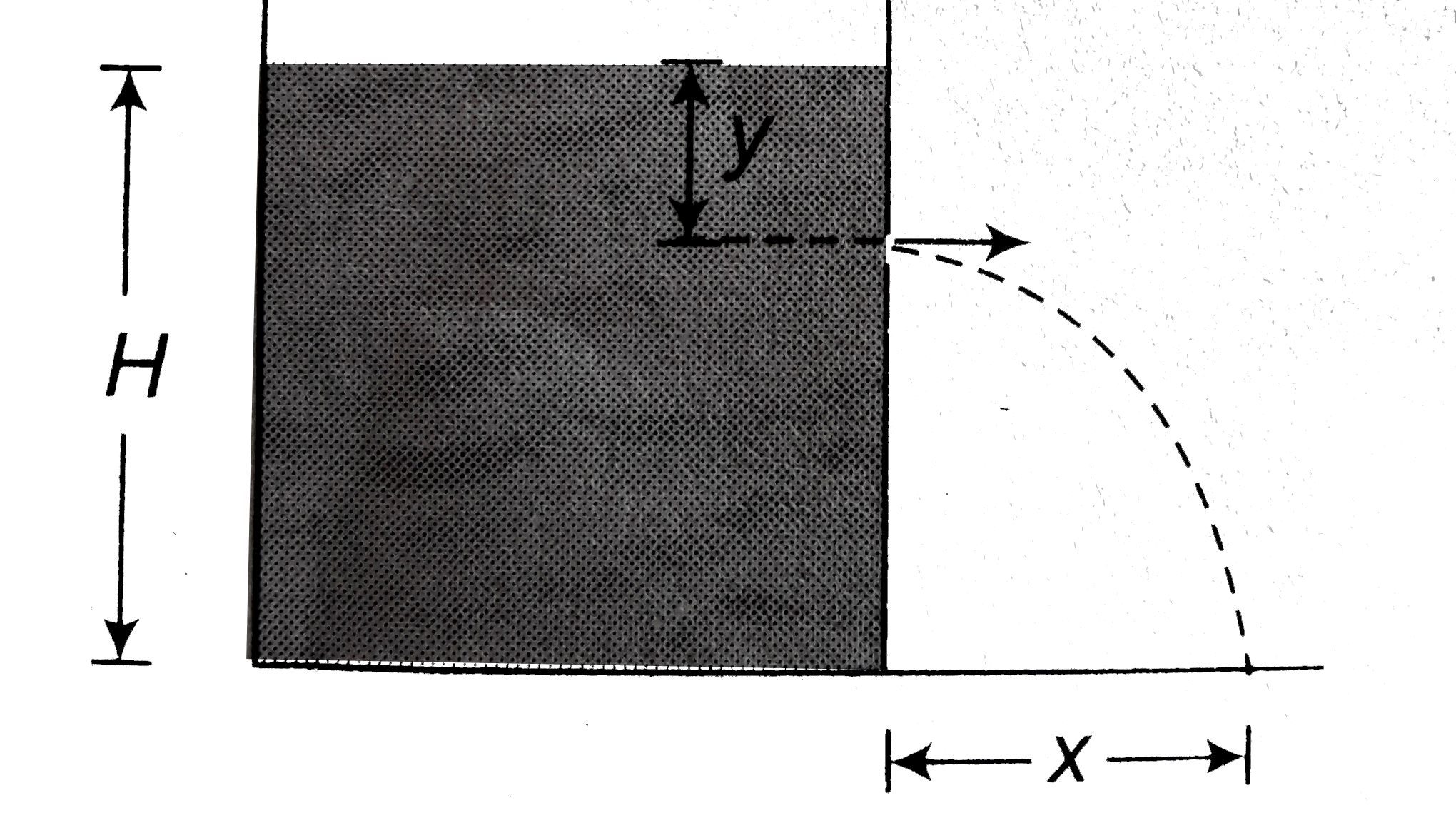Calculate the velocity with which a liquid emerges from a small hole in the side of a tank of large cross-sectional area if the hole is 0.2 m below the surface liquid (g = 10 ms−2.
From Torricelli theorem, velocity of efflux υ=√2gh
=√2×10×0.2
=2m/s
Topper's Solved these Questions
- PROPERTIES OF MATTERBOOK - CBSE COMPLEMENTARY MATERIALCHAPTER - PROPERTIES OF MATTEREXERCISE - MULTIPLE CHOICE QUESTIONS (MCQs)
20 Videos
- PROPERTIES OF MATTERBOOK - CBSE COMPLEMENTARY MATERIALCHAPTER - PROPERTIES OF MATTEREXERCISE - Long Answer Type Questions (5 Marks)
1 Video
- NEWTON'S LAWS OF MOTIONBOOK - CBSE COMPLEMENTARY MATERIALCHAPTER - NEWTON'S LAWS OF MOTIONEXERCISE - Laws Of Motion
20 Videos
- ROTATIONAL MOTION BOOK - CBSE COMPLEMENTARY MATERIALCHAPTER - ROTATIONAL MOTION EXERCISE - MULTIPLE CHOICE QUESTIONS
20 Videos
Similar Questions
Calculate the speed with which wafer emerges from a hole in a tank at which the gauge pressure is 3×105N/m2 ?
View SolutionWater from a tap emerges vertically downward with an initial speed of 1.0ms−1. The cross-sectional area of the tap is 10−4m2. Assume that the flow is steady. What is the cross-sectional area of the stream 0.15 m below the tap? Use g=10ms−2.
View Solution
Knowledge Check
A tank, which is open at the top, contains a liquid up to a height H. A small hole is made in the side of the tank at a distance y below the liquid surface. The liquid emerging from the hole lands at a distance x from the tank :
 AIF y is increased from zero to H, x will first increase and then decreaseBx is maximum for y=H/2CThe maximum value of x is HDThe maximum value of x will depend on the density of the liquid
AIF y is increased from zero to H, x will first increase and then decreaseBx is maximum for y=H/2CThe maximum value of x is HDThe maximum value of x will depend on the density of the liquidA tank which is open at the top, contains a liquid up to a height H. A small hole is made in the side of the tank at a distance y below the liquid surface. The liquid emerging from the hole lands at a distance x from the tank. Choose incorrect option.
 .AIf y is increased from zero to H, x will first increase and then decreaseBx is maximum for y=H/2CThe maximum value of x is HDThe maximum value of x will depend on the density of the liquid.
.AIf y is increased from zero to H, x will first increase and then decreaseBx is maximum for y=H/2CThe maximum value of x is HDThe maximum value of x will depend on the density of the liquid.A vertical tank, open at the top, is filled with a liquid and rests on a smooth horizontal surface. A small hole is opened at the centre of one side of the tank. The area of cross-section of the tank is N times the area of the hole, where N is a large number. Neglect mass of the tank itself. The initial acceleration of the tank is
Ag2NBg√2NCgNDg2√N
Suppose that two tanks, 1 and 2, each with a large opening at the top, contain different liquids. A small hole is made in the side of each tank at the same depth h below the liquid surface, but the hole in tank 1 has half the cross-sectional area of the hole in tank 2. (a) What is the ratio ρ1/ρ2 of the densities of the liquids if the mass flow rate is the same for the two holes? (b) What is the ratio Rv1/Rv2 of the volume flow rates from the two tanks? (c) At one instant, the liquid in tank 1 is 16.0 cm above the hole. If the tanks are to have equal volume flow rates, what height above the hole must the liquid in tank 2 be just then?
View SolutionA cylindrical tank is filled with water to a level of 4 m. A hole is opened at a height of 60 cm from bottom. The ratio of the area of the hole to that at cross-sectinal area at cylinder is 0.2. Then the velocity with which water is coming out is (g=10m/s2)
View SolutionA cylindrical tank is filled with water to a level of 3m. A hole is opened at a height of 52.5 cm from bottom. The ratio of the area of the hole to that of cross-sectional area of the cylinder is 0.1. The square of the speed with which water is coming out from the orifice is (Take g=10m/s2)
View SolutionA tank has a small hole on its side at a height y1. It is filled with a liquid (density ρ) to a height y2. If the absolute pressure at the top of the fluid is Pt, find the velocity with which it leaves the tank. Assume that the cross-sectional area of the tank is larger as compared to that of the hole.

View SolutionA large cylindrical tank has a hole of area A at its bottom. Water is oured in the tank by a tube of equal cross sectional area A ejecting water at the speed v.
View Solution
